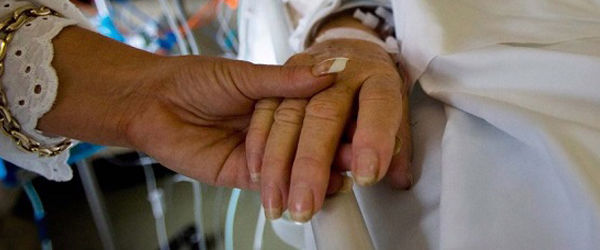As late as the 1940s --- prehistory to some readers --- it was still traditional to wait until Christmas Eve to set up the family tree, though parents might tack up strings of colored lights on gables and porches and hang a wreath on the door a few days beforehand.
When my sister Helen was born exactly one week before Christmas, Papa and Mom began stringing the lights and set up the tree on the 18th to make her birthday more special. In later years Papa would chuckle recalling concerned neighbors asking why he was rushing the season.
A great phrase, “rushing the season,” but what a quaint idea when home Christmas decorations are seen at the start of football season. This year, for purely economic reasons (read: greed), many retailers swept out Halloween, proceeding directly to Christmas, skipping Thanksgiving altogether.
Only a lifetime ago, it was considered Bad Form for retailers to rush the season by setting up Christmas displays before Thanksgiving, the secular holyday proclaimed by Abraham Lincoln in 1863 for observance on the last Sunday in November.
In 1939, during the Great Depression, the last Thursday fell on the 30th, leaving only 20 days for Christmas shopping --- retailers closed on Sundays to honor the Sabbath. President Franklin Roosevelt, thinking to aid the economy, rushed the season that August by proclaiming the Thanksgiving observance for the 23rd instead of the last Thursday of November.
The nation was indignant. Football schedules, worked out three to five years in advance, had to be scrapped. Governors in several states defiantly proclaimed their states’ own Thanksgiving Day for the 30th. The boost in sales never occurred and the forwarded holiday was mocked as “Franksgiving.” FDR threw in the towel in 1941 signing into law a resolution taking the Thanksgiving proclamation out of the president’s hands, established henceforward as a national holiday celebrated on the fourth Thursday of November.
So, what’s all this have to do with the feast day of Our Lady of the Expectation?
It took a long time for the Church to get around to celebrating Jesus’ birthday. Tertullian, that incisive theologian of the late 100s, sneeringly brushed the notion aside: “In Scripture, only sinners celebrate birthdays.” Not until well into the fourth century was the Nativity set on December 25 nine months after the Feast of the Annunciation already commemorated on March 25 because the Crucifixion was believed to have occurred on that date: conventional wisdom held that great men lived lives of a perfect length, dying on the same date as their conception or birth.
At the same time, the Church nixed celebrating major feasts falling in Lent. The Annunciation itself was often transferred to the Thursday after Easter --- an arrangement bishops at the tenth Synod of Toledo (636) didn’t much care for. Thus in Spain the Annunciation fell a week before Christmas until the Church Universal determined that celebrations of occasional feasts did not compromise Lent’s overall sense of sorrow.
Restoring the Annunciation to March, Spain’s bishops designated December 18 a day venerating Mary’s pregnancy, her divine “expectation.” This feast was removed from the Church’s universal calendar in 1914 yet old editions of missals show it remaining as a votive Mass. In Spain, Portugal, Italy and Poland, however, the feast is still part of the liturgical year.
In celebrating the Expectation of the Blessed Virgin, mothers and their unborn babies could be placed under the patronage of Mary and the Baby Jesus in her womb, a sign that unborn babies are persons, not mere masses of tissue.
The attributes of Mary found in paintings under this title are worth considering, described here by Father Marian Zalecki, of the National Shrine of Our Lady of Czestochowa:
“Our Blessed Lady, well advanced in pregnancy, is portrayed in the highest dignity of her Divine Motherhood. Dressed in royal apparel as daughter of David the King, she awaits with joy the arrival of her divine Son, the Prince of Peace. Her whole posture suggests how she remains wholly consumed in contemplation of her Son under her heart.”
What if Pope Benedict XVI restored the celebration of the Expectation of the Blessed Virgin to the Universal Church? It could be a day uniquely devoted to all expectant mothers, its octave culminating with Christmas, the festival of children. Mothers and their unborn babies could be placed under the patronage of Mary and the Baby Jesus in her womb, a sign that unborn babies are persons, not mere masses of tissue.
On December 18, mothers delighting in their pregnancies and the babies in their wombs could receive a special blessing to reflect a profound truth: as Jesus took Mary’s flesh to become God incarnate; so babies take their mothers’ flesh and can later learn to bring knowledge of Jesus to the world. On this day all expectant mothers would be inspired to take as their model the Lady Mary, the unmarried girl of Nazareth who courageously permitted the Holy Spirit to make her womb a home, a tabernacle, for the promised Savior.
As a sign of this feast, instead of rushing the season by putting up Christmas lights in November, Catholics could put up their lights on the Feast of Our Lady of the Expectation, symbolizing baptismal solidarity as children of the Light. Thanking God for the children and reflecting on the fact that God became a Child for our sakes we could pray in joyful expectation the words of Isaiah 45:8, the Church’s antiphon for December 18:
“Drop down dew, ye heavens, from above, and let the skies rain down the Righteous One!
Let the earth be opened and bud forth a Savior!”
My email is below. What do you say?
Sean M. Wright is a member of Our Lady of Perpetual Help parish in Santa Clarita. He conducts workshops and enrichment courses on symbolic art, the Mass and other Catholic topics at parishes throughout the archdiocese. You can email your comments to him at [email protected].

